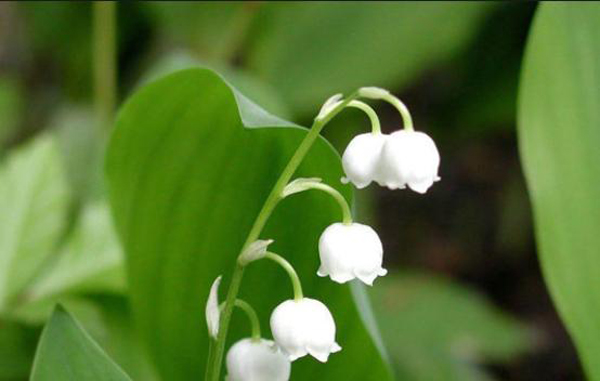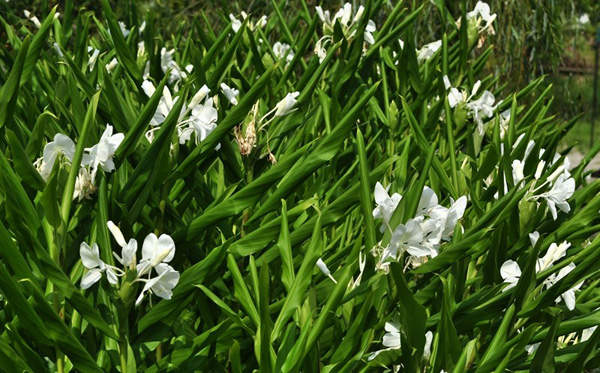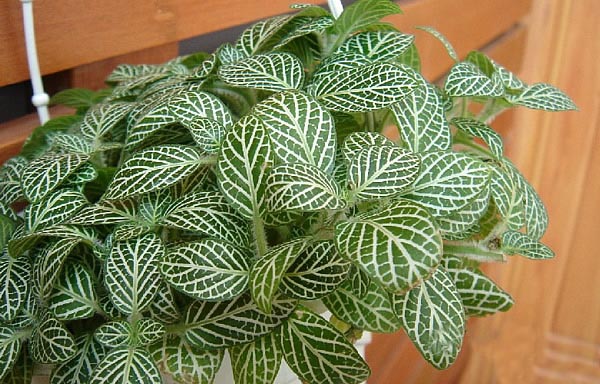How to grow Campanula

Reproduction: pay attention to the way of sowing, small smooth oval seeds are preserved after drying in advance, and start sowing in late winter and early spring, sowing in warm plastic sheds as far as possible to avoid high temperatures. After finishing, the sowing soil should be flat, and after pouring water, the seeds should be sown evenly. The soil should be thin, the seedlings should be properly watered, and compound fertilizer should be applied after development. Generally, it can be transplanted or planted when it is about 10cm. Of course, it can also be sown immediately after maturity, and it will blossom in the second year. If sown in autumn, the flowers will usually bloom in the third year.
Soil: soil pH should be between 5.5-6.0. it is loose, nutritious, easy to drain, porous matrix, clay accounts for 20-30%, contains iron chelates, 1m3 applies 1-1.5kg completely balanced fertilizer.
Watering: keep plenty of water before the radicle grows, maintain a high humidity level, and keep the soil moist. If possible, add a layer of coarse-grained vermiculite to the newly grown seedlings to ensure that the water is not lost. In addition, under normal circumstances, the soil can be slightly drier during the watering interval.
Temperature: the normal temperature for growth is 13-18 ℃. There is no Frosts Descent climate in winter, the temperature can be 3-5 ℃, outside the cultivation needs to keep warm. Spring is cultivated at a temperature of 15-18 ℃ for 5-9 weeks, and the culture period is increased at a temperature of 13-15 ℃.
Sunshine: it likes long hours of light, daily light 14 hours will naturally blossom, if the need for early flowering time, can be adjusted through 4 hours of intermittent night for 30 days.
Fertilization: alternate application of nitrogen fertilizer and potassium balanced fertilizer at the concentration of 150-200ppm in a week according to the ratio of 1RU 1.5. To accelerate the growth of seedlings, 30-50ppm calcium and nitrogen fertilizer and calcium fertilizer can be applied. The plant needs to be applied with 0.025% magnesium sulfide and iron chelates 1-2 times to ensure these trace elements. Note that no fertilizer can be applied after mid-September.
Insect pests: they are susceptible to powdery mildew, rust and leaf spot, which can be removed by spraying 1500 times diluted carbendazim wettable powder. Plants are attacked by thrips and aphids during growth and can be removed by spraying 1500 times diluted omethoate EC.
Pruning: the plant does not need to adjust and pick the heart in the growth, so that the appearance may not be neat at first, but it will adjust naturally in the later growth, so there is no need for pruning.
How to grow Campanula
Now there are more and more flower friends who grow bluebells themselves. In this paper, we come to learn how to plant bluebells with flower friends. Generally speaking, we plant bluebells in two ways, one is to sow seeds, the other is to buy seedlings. The reason for buying seedlings is that it is difficult for some flower friends to sow seeds, and buying seedlings directly can avoid the dilemma of sowing without sprouting.
Let's first introduce bluebells. Now many bluebells are horticultural varieties, mostly perennial herbs, flowering in summer, generally sowing in spring and autumn, about 30 centimeters of plants, and varieties with plants up to 1 meter. The planting environment needs to be sunny (if the cultivation environment is not bright enough, it needs to be carefully considered).
Let's start with the maintenance of bluebells seedlings. If you are flower friends who sow seeds, you can look at them from behind, first understand sowing, and then look at seedling maintenance.
6-8 weeks after sowing and sprouting (with real leaves), flowerpots with a diameter of about 9-11 cm can be used for transplantation. Don't plant the plant too deeply. Just bought seedlings can also be fake planting and then planting, so that the seedling stage is easier to manage, of course, you can also omit this step, directly on the pot planting.
What you need to say to flower friends is that bluebells do not need to pick hearts and can grow freely.
The planting substrate needs to be well drained, and the clay (garden soil) content in the substrate is 20-30%, not all peat, because bluebells are all-day plants, in order to enable the plants to grow in the first three weeks of cultivation, the plants can be placed under short-day conditions, and when the plants grow to the ideal height, the sunshine time can be prolonged (16-18 hours) in order to make the plants bloom.
The optimum growth temperature of bluebells is 13 ℃-18 ℃. When there is no frost in winter, the indoor or outdoor temperature can be kept between 3 ℃-5 ℃. If it is planted in the open air, it needs to be covered to prevent Frosts Descent.
The demand for the most fertilizer of Campanula is general. You can give some potash and nitrogen fertilizer appropriately in spring, but do not apply fertilizer after mid-September.
Let's talk about the sowing of bluebells. Bluebells belong to cool plants, so we usually sow in autumn or in January-February. Bluebells seeds are very small, sowing and sowing can be done without soil mulching. The best germination temperature is 20 ℃-22 ℃. After sowing, the soil should be kept slightly moist, not too moist. Generally, it can sprout in 14-18 days. Flower friends need to be reminded that they should be shaded after sowing to avoid direct sunlight.
When the seeds germinate, it is necessary to properly reduce the soil moisture, so as to prevent overgrowth, but not too dry, can also be given appropriate light.
How to plant Campanula, how to plant Campanula
How to plant Campanula officinalis 1. Adapt to the environment
Campanula prefers cool summers and mild winters. Pay attention to overwintering to prevent cold, need low-temperature greenhouse.
2. Soil demand
Campanula for soil requirements, soil pH should be between 5.5-6.0, and loose, adequate nutrients, easy drainage, porous matrix, clay accounts for 20-30%, containing iron chelates, 1m3 application of 1-1.5kg completely balanced fertilizer.
3. Sunshine should be sufficient.
Bluebells like long hours of light, daily light 14 hours will naturally blossom, if the need for early flowering time, can be adjusted by 4 hours of intermittent night 30 days treatment.
4. Adequate watering
Campanula ensures adequate moisture before radicle growth, maintaining a high humidity level, while the soil remains moist, adding a layer of coarse-grained vermiculite to the newly grown seedlings if possible to ensure that the water is not lost. In addition, under normal circumstances, the soil can be slightly drier during the watering interval.
5. Temperature adaptation
The normal temperature for the growth of Campanula is 13-18 ℃. There is no Frosts Descent climate in winter, the temperature can be 3-5 ℃, outside the cultivation needs to keep warm. Spring is cultivated at a temperature of 15-18 ℃ for 5-9 weeks, and the culture period is increased at a temperature of 13-15 ℃.
6. Fertilization control
In order to accelerate the growth of seedlings, 30-200ppm calcium and nitrogen fertilizer and calcium fertilizer can be applied to accelerate the growth of seedlings. The plant needs to be applied with 0.025% magnesium sulfide and iron chelates 1-2 times to ensure these trace elements. Note that no fertilizer can be applied after mid-September.
7. Pest control
Bluebells are prone to powdery mildew, rust and leaf spot, which can be removed by spraying 1500 times diluted carbendazim wettable powder.
- Prev

Ginger flower cultivation method
Growth habits: Ginger flower nature is preferred to high temperature, high humidity environment, not cold. Reproduction methods: The reproduction methods are divided into sexual reproduction and asexual reproduction, and can also be selected to reproduce. Ginger flowers reproduce at temperatures where they can safely winter outdoors
- Next

Culture method of reticulate grass
The best propagation time: under the condition of suitable temperature, the grass can be propagated by cutting in the whole year, and the cutting effect is the best when the temperature is slightly higher from May to September. The best growing soil: to make the growing soil of reticulate grass, you can first put a coarse-grained matrix or ceramsite about 2 cm thick at the bottom of the basin as a filter layer.
Related
- Fuxing push coffee new agricultural production and marketing class: lack of small-scale processing plants
- Jujube rice field leisure farm deep ploughing Yilan for five years to create a space for organic food and play
- Nongyu Farm-A trial of organic papaya for brave women with advanced technology
- Four points for attention in the prevention and control of diseases and insect pests of edible fungi
- How to add nutrient solution to Edible Fungi
- Is there any good way to control edible fungus mites?
- Open Inoculation Technology of Edible Fungi
- Is there any clever way to use fertilizer for edible fungus in winter?
- What agents are used to kill the pathogens of edible fungi in the mushroom shed?
- Rapid drying of Edible Fungi

